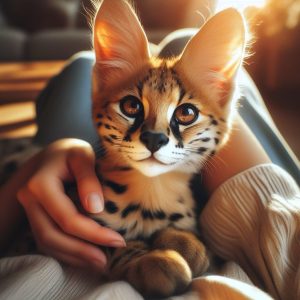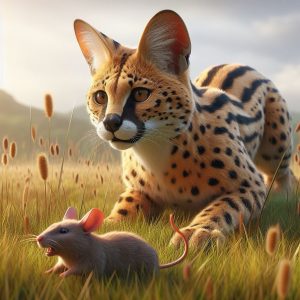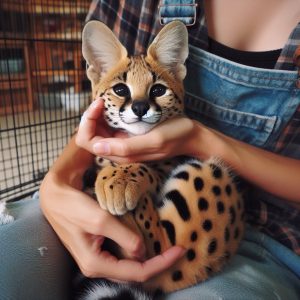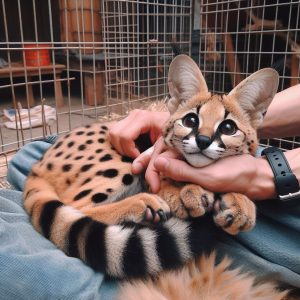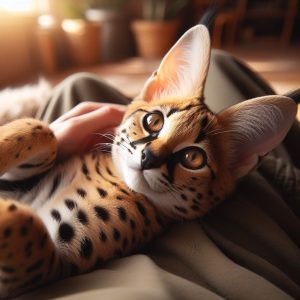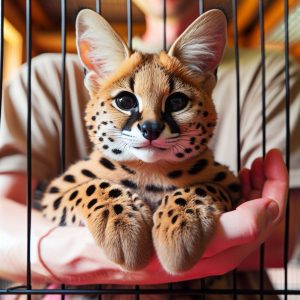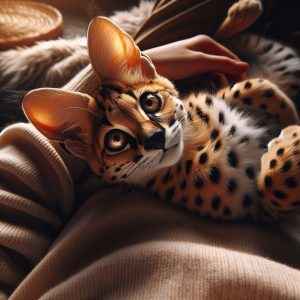Serval cats are wild animals native to Africa, known for their unique appearance and behavior. They are solitary creatures in the wild, but in captivity, they can sometimes be kept as exotic pets. However, keeping serval cats with dogs requires careful consideration and planning due to their different temperaments, behaviors, and needs.
Firstly, it’s essential to understand the natural behavior of serval cats. These animals are solitary hunters and are territorial by nature. They are also known for their agility, speed, and strong predatory instincts. In contrast, dogs are social animals that often live in packs and have been domesticated for thousands of years, resulting in various breeds with different temperaments and behaviors.
Introducing a serval cat to a household with dogs requires gradual and supervised introductions. It’s crucial to ensure the safety of both the serval and the dogs during the introduction process. Dogs may perceive the serval as prey due to its size and appearance, triggering their prey drive. Similarly, the serval may feel threatened by the presence of dogs, leading to defensive or aggressive behavior.
Proper socialization is essential for ensuring that the serval and dogs can coexist peacefully. This process involves gradually exposing them to each other’s presence in a controlled environment, such as through scent swapping and supervised interactions. Positive reinforcement techniques can be used to reward desired behaviors and discourage aggression or fear.
Another consideration is the size difference between serval cats and most dog breeds. Serval cats are typically larger and more powerful than domestic dogs, which can pose a risk if conflicts arise. It’s essential to provide separate spaces for the serval and dogs to retreat to if needed and to supervise their interactions closely to prevent any potential conflicts.
Additionally, it’s crucial to meet the dietary and environmental needs of both the serval and dogs. Serval cats are obligate carnivores, meaning they require a diet primarily consisting of raw meat. In contrast, dogs are omnivores and can thrive on a balanced diet of meat, vegetables, and grains. Ensuring that each animal receives the appropriate diet is essential for their health and well-being.
Furthermore, providing enrichment and mental stimulation is crucial for both serval cats and dogs. Serval cats are highly active animals that require opportunities for exercise, exploration, and hunting behavior. Similarly, dogs need regular physical and mental stimulation to prevent boredom and behavioral problems. Providing toys, climbing structures, and opportunities for play can help meet the needs of both species.
In conclusion, while it is possible for serval cats to live with dogs under the right circumstances, it requires careful planning, supervision, and consideration of the needs of both species. Introducing them gradually, providing proper socialization, and meeting their dietary and environmental needs are essential for ensuring a harmonious coexistence. However, it’s essential to remember that every animal is unique, and not all serval cats may be suitable for living with dogs. Consulting with experts in exotic animal care and behavior is recommended before attempting to introduce a serval cat to a household with dogs.

